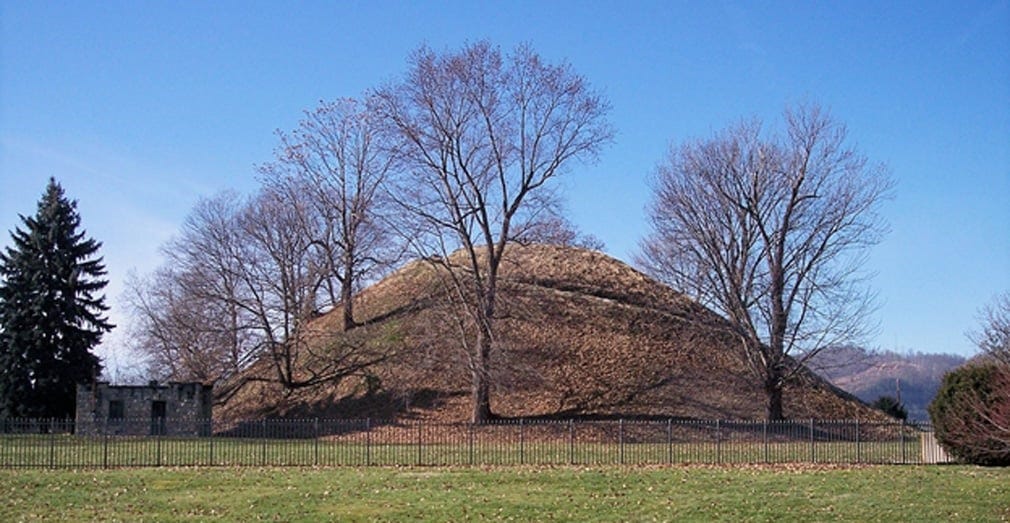Burned Bones, Mysterious Timber Circles & the Rites of the Ancients
Adena Culture in Mason County

Mason County, West Virginia, is a treasure trove of history. Established in 1804, the county is named after George Mason, a delegate at the American Constitutional Convention of 1787. In October 1774, Colonel Andrew Lewis led the Virginia militia to victory against a confederation of Algonquian Shawnee and Mingo forces led by Chief Cornstalk in the "Battle of Point Pleasant." The camp named "Camp Point Pleasant" grew into the modern town and county seat of Mason County.

Following the Battle of Point Pleasant, Chief Cornstalk (Hokoleskwa or Kokolesqua in Shawnee) became a diplomat and peace advocate who secured working relations between his Shawnee kinsmen and Revolutionary Americans.
Disturbing Death and Injustice
In the fall of 1777, Cornstalk and his son, Elinipsico, were wrongly detained at Fort Randolph while attempting to engage in peaceful relations with the Virginia militia, and both were murdered on November 10th. By the time of his death, Chief Cornstalk had become a renowned figure throughout the American colonies, and there was outrage over his wrongful end.
None other than Patrick Henry (governor of Virginia at the time) attempted to bring justice upon Cornstalk’s killers, but the militiamen refused to testify against one another, and the murderers walked free.
While these historical events are intriguing, even older secrets lie buried in the ancient soil of Mason County. Over 2,000 years ago, this region of West Virginia was home to several ritual centers of the Adena Culture.
History Hidden in the Soil
The Adena Culture, the first to build burial mounds and earthworks in the Ohio River Valley, spanned from 1000 BC to around 200 AD. A major Adena center, consisting of 10 earthen enclosures and between 40 and 50 burial mounds, was located along the Kanawha River at present-day Charleston, West Virginia.
Another significant Adena site was at Grave Creek Flats in Marshall County, with several enclosures and around 47 mounds, including the famous Grave Creek Mound. While these sites have garnered much attention, the lesser-known Adena sites in Mason County are equally extraordinary, offering a unique glimpse into Adena ritualism and burial practices.

Ritual Circles
The Neibert Site was located along the Ohio River south of Point Pleasant, near the Gallipolis Locks and Dam. Excavations at Neibert ahead of a locks replacement project in the 1980s revealed the former existence of four or five timber circles located on a high terrace above the Ohio River.


